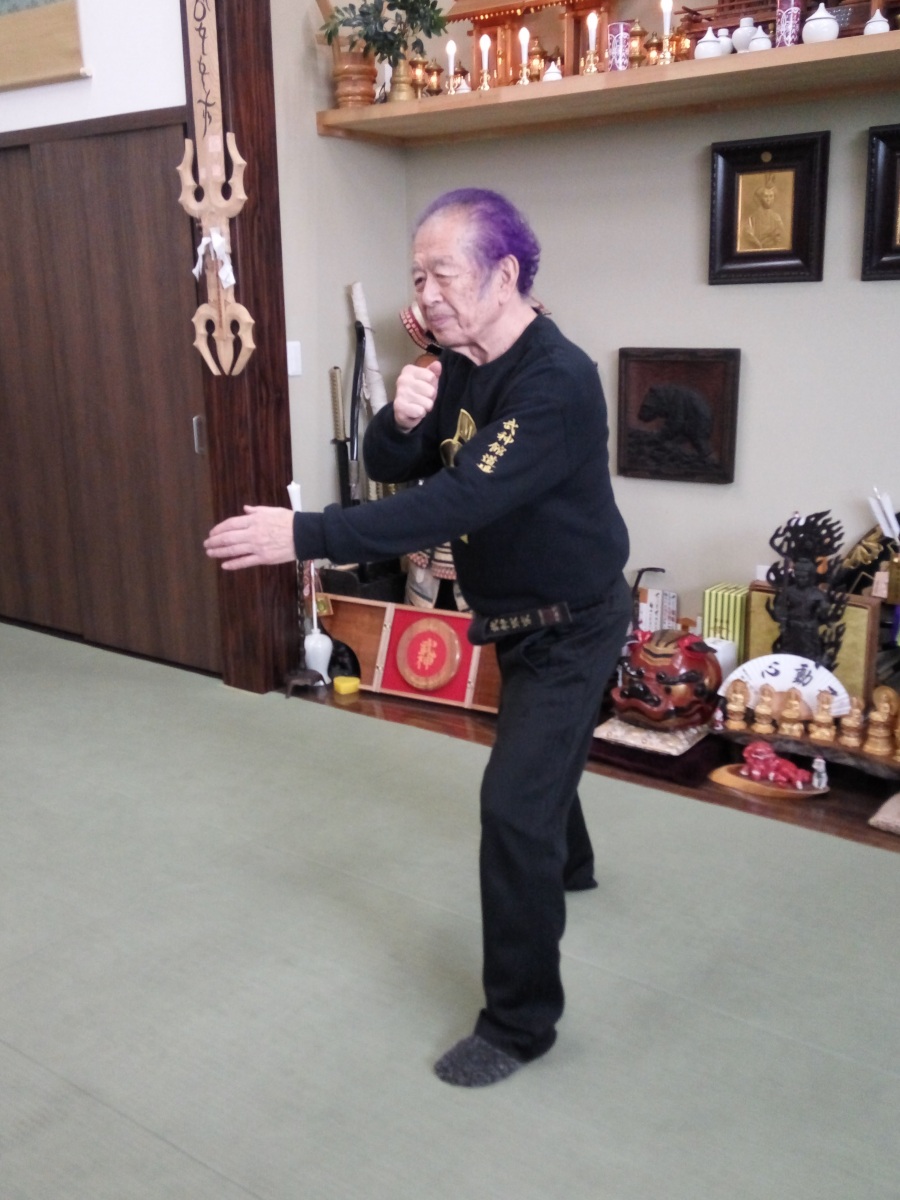勝負いなく Shōbu Inaku: Bujinkan Strategies of Control Part 2
From Bujinkan Santa Monica by Michael
 |
| Hatsumi Sensei's dynamic kamae. Photo by Michael Glenn |
One common thing we all feel from him is that he disappears. I know that sounds odd, but it’s like he’s there in front of you, then he’s not. In fact, last week he explained how this is one of his strategies for control. He told us to,
“Move naturally like this as they're coming in. Move naturally without making a fight of it.”That was the English translation but Soke used the the words 勝負いなく shōbu inaku meaning that there is no fight or the fight disappears. Shōbu implies a contest or a match where victory or defeat is decided. Since we don’t study sports martial arts, we are not attached to either of these outcomes.
いなくなる inakunaru means to disappear. Or, in a definition that will help us understand this strategy, it means “to stop being". Any fight, match, or contest requires at least two combatants. What happens if one disappears?
This starts internally. You have to remove yourself from the idea of winning or losing. Or even that there is any fight to win or lose. When you step outside of that small world where the fight exists, you will find it very easy to control the situation.
Hatsumi Sensei watched all of us trying to do that. He likes to stand in the back of the dojo on the wood floor and observe us. Sometimes I will even see him stand right in the middle of the room watching. He saw that many of us were still trying to fight, so he said we should leave that attitude at home…
“In your own training it’s ok to punch and fight like this, but here we’re studying control.”He told us we are not learning to exchange blows. That is what happens in sports martial arts, people exchange blows until victory or defeat is decided. Sometimes by judges! But there are no judges in real combat.
Instead Hatsumi Sensei told us to play in the space. It’s not fighting. This is how we learn how to control in the space.
When you understand this at a deep level, two critical changes happen in your training:
First, by not showing that you're fighting, you disappear from the fight. This is not just a psychological trick. You can learn to physically disappear from the fight.
I felt this when I tried to grab Hatsumi Sensei’s arm. He was teaching tehodoki. When I went to grab he just disappeared. He reappeared after I flew through the air and landed on my back.
And second, you make the fight itself disappear. This causes the opponent to lose strength and ability to fight. Hatsumi Sensei showed me this aspect another time when I stabbed at him. The way he smiled at me, and his kiai in that moment, caused my attack to just deflate because he was not fighting me.
Hatsumi Sensei said again and again that コントロール kontorooru is this year’s theme. Not fighting... just controlling. It’s not a waza or technique that can be taught.
In fact there is only one clear way to learn it. That is through direct experience with Hatsumi Sensei or with a teacher who has had that experience. Then you can learn what Soke means when he tells us that he is not fighting. He says he is just following the path of kami (神の道 kami no michi). We would be smart to follow his lead.
UP NEXT: The 虚実 Kyojitsu of Control: Bujinkan Strategies of Control Part 3





 Gyokko Ryû is an excellent school, profoundly related to the new theme for 2017 of “controlling the space”.
Gyokko Ryû is an excellent school, profoundly related to the new theme for 2017 of “controlling the space”.

 Hatsumi sensei said in class that “you cannot be good doing Bujinkan, if you’re good, you are not doing Bujinkan”. It reminded me of Salvador Dali’s quote: “Don’t be afraid of perfection, you’ll never reach it”. This quote could summarise what we are training these days. Don’t try to be perfect.
Hatsumi sensei said in class that “you cannot be good doing Bujinkan, if you’re good, you are not doing Bujinkan”. It reminded me of Salvador Dali’s quote: “Don’t be afraid of perfection, you’ll never reach it”. This quote could summarise what we are training these days. Don’t try to be perfect.